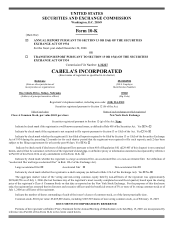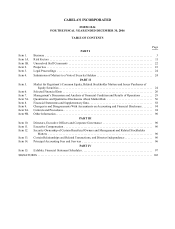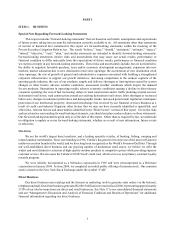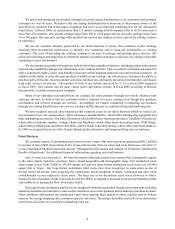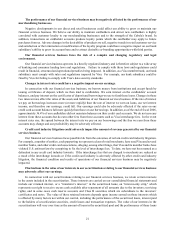Cabela's 2006 Annual Report Download - page 15
Download and view the complete annual report
Please find page 15 of the 2006 Cabela's annual report below. You can navigate through the pages in the report by either clicking on the pages listed below, or by using the keyword search tool below to find specific information within the annual report.11
ITEM 1A. RISK FACTORS
Risk Factors
Risks Related to Our Merchandising Business
If we cannot successfully implement our destination retail store expansion strategy, our growth and
profitability would be adversely impacted.
Since January 1, 1998, we have increased the number of our destination retail stores from two, totaling
124,000 square feet, to 18, totaling 2.7 million square feet. We currently plan to open eight additional destination
retail stores by the end of 2007. We continue to actively seek additional locations to open new destination retail
stores. Our ability to open new destination retail stores in a timely manner and operate them profitably depends on a
number of factors, many of which are beyond our control, including:
• our ability to manage the financial and operational aspects of our retail growth strategy;
• our ability to identify suitable locations, including our ability to gather and assess demographic and
marketing data to determine consumer demand for our products in the locations we select;
• our ability to negotiate and obtain economic development packages with local and state governments
where our new destination retail stores would be located;
• our ability to properly assess the implications of economic development packages and customer density
to project the profitability of potential new destination retail store locations;
• our ability to secure required governmental permits and approvals;
• our ability to hire and train skilled store operating personnel, especially management personnel;
• the availability of construction materials and labor and the absence of significant construction delays or
cost overruns;
• our ability to provide a satisfactory mix of merchandise that is responsive to the needs of our customers
living in the areas where new destination retail stores are built;
• our ability to supply new destination retail stores with inventory in a timely manner;
• our ability to properly assess operational and regulatory challenges involved in opening and successfully
operating destination retail stores in Canada;
• our competitors building or leasing stores near our destination retail stores or in locations we have
identified as targets for a new destination retail store;
• general economic and business conditions affecting consumer confidence and spending and the overall
strength of our business; and
• the availability of financing on favorable terms.
We may not be able to sustain the growth in the number of our destination retail stores, the revenue growth
historically achieved by our destination retail stores or to maintain consistent levels of profitability in our retail
business, particularly as we expand into markets now served by other large-format sporting goods retailers and
mass merchandisers. In particular, new destination retail stores typically generate lower operating margins because
pre-opening costs are fully expensed in the year of opening and because fixed costs, as a percentage of revenue,
are higher. In addition, the substantial management time and resources which our destination retail store expansion
strategy requires may result in disruption to our existing business operations which may harm our profitability.


